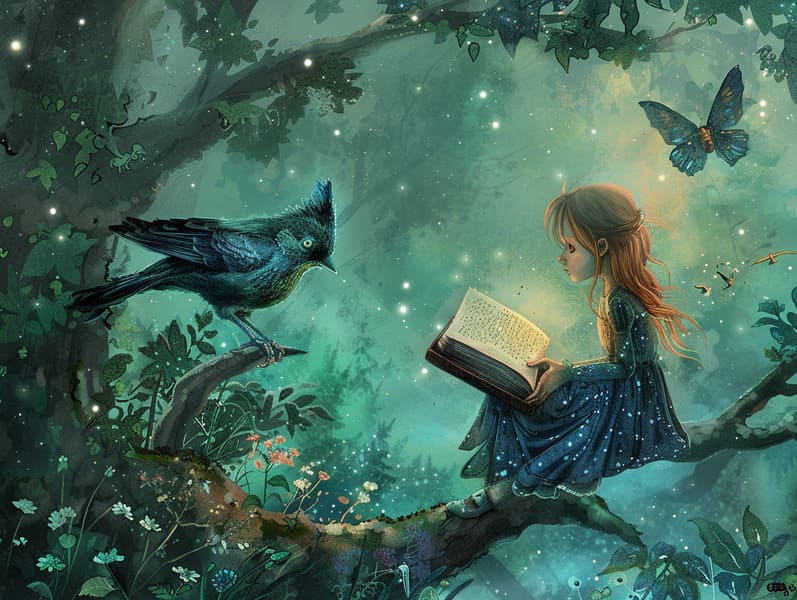The Inception of Ancient Fairy Tales with Their Unchanging Fascination.
The Inception of Ancient Fairy Tales with Their Unchanging Fascination.
Blog Article

Legendary fairy tales have enduring presence. These tales have been narrated from one generation to the next far before they were ever transcribed. They arose from a variety of civilizations, including American traditions. They were initially conveyed among grown-ups, often carrying themes and messages reflective of the societal norms and beliefs of the time.
The Brothers Grimm, Jacob and Wilhelm Grimm, were among the first to gather many of these beloved fairy tales. Their collection, "Grimm's Fairy Tales," included classics like "Cinder Maid," "The Bread Crumb Trail," and "Schneewittchen," which have since become classics in the world of classic fairy tales. Similarly, Hans Christian Andersen's magical fairy tales, such as "The Story of the Little Mermaid," and "The Story of the Ugly Duckling," have floated into hearts worldwide, solidifying their place in the pantheon of iconic fairy tales.
Though they are old, these tales remain as important as ever, especially as children's night stories. These fantastical tales are now available in different formats, including gorgeously illustrated books, captivating animations, and digital storybooks.
Their continued relevance can be attributed to several delightful features:
Life Lessons: Traditional fairy tales often offer important moral lessons. Tales like "The Tale of the Boy Who Cried Wolf" teach the merit of being truthful, while "The Hare and the Tortoise" emphasize the virtues of resolve and unpretentiousness. These stories offer young readers clear distinctions between correct and incorrect, shaping their moral compass in a subtle yet important way.
Kindness and Comprehension: Traditional fairy tales frequently feature protagonists facing trials and tribulations, prompting young readers to resonate with their struggles and support their triumphs. For instance, "The Tale of Beauty and the Beast" shows us the virtue of looking past the exterior to perceive the inner being of a character, building insight and comprehension.
Cultural Knowledge: Many old fairy tales are rooted in the cultural contexts from which they originated. Reading these tales can provide illuminating insights into different customs, cultivating a sense of global appreciation and awareness.
Fantasy and Imagination: The enchanted elements in timeless fairy tales—magic wands—revitalize children’s fantasies. These narratives carry readers to mythical realms, motivating imaginative ideas and a sense of curiosity that endures a lifetime.
Classic fairy tales are not only mesmerizing but also edifying. They function as delightful tools in advancing various intellectual and emotional capacities in young readers. When ancient fairy tales are voiced, they advance verbal skills by offering new terms and meanings and sophisticated sentence structures. This practice also website boosts auditory skills and attention, as young ones hang on every word, expectant to see what happens next.
Furthermore, analyzing the themes and characters of old fairy tales can strengthen intellectual skills and thought processes. Little ones are taught to pinpoint patterns, foresee events, and understand cause and effect. These talks also assist the young voice their thoughts and feelings, contributing to their emotional intelligence.
In today’s digital age, the existence of digital storybooks has made these fairy tales more obtainable than ever. Internet sites and web apps make available huge assortments of traditional fairy tales that can be seen or listened via anytime, anywhere. Fairy tales voiced are particularly well-liked, extending an entertaining method for children to delight in these magical stories. Spoken stories and read-out-loud stories transport characters and settings to life, often accompanied by enchanting melodies and music that amplify the tale-telling adventure.
The timeless allure of old fairy tales lies in their ability to transform to today's society while retaining their key morals. Contemporary revisions of these narratives often bring in more varied figures and modern settings, making them relatable to today’s audience. However, the central morals of valour, sympathy, and fair-mindedness remain unchanged, continuing to strike a chord with young listeners of all ages.
Timeless fairy tales also offer a sense of reassurance and closeness. They afford a orderly narrative with a straightforward beginning, middle, and end, often finishing with the closure of conflicts and the triumph of truth over falsehood. This assuredness can be relieving for kids, bringing a sense of solidity in an unpredictable world.
Old fairy tales continue to enthrall and train new generations, maintaining their beauty and importance in modern society. As kids' bedtime tales, they extend a perfect blend of delight and instruction, enriching moral values, empathy, and creativity. The presence of digital fairy tales and the in demand status of fairy tales told out loud affirm that these traditional fairy tales remain attainable to new generations.
By conserving and conveying these tales, we continue to exalt the rich tapestry of human imagination and cultural heritage. Whether you are exploring a artistically illustrated book, delving into a electronic library, or playing an narrated book, the enchantment of classic fairy tales is always within reach. These narratives illustrate of the undying nature of storytelling and its ability to unite us across epochs and places.
No matter if you are perusing a artistically illustrated book, exploring a virtual collection, or listening through an spoken story, the charm of traditional fairy tales is always within reach.
These stories illustrate of the timeless influence of storytelling and its ability to connect us across time and space, forging a link that captivates and teaches alike.